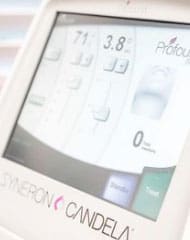Regardless of specific implant type, breast augmentation remains one of the most commonly performed cosmetic surgery procedures in the United States as well as the world. Within the U.S., there is a definitive trend toward choosing silicone gel breast implants rather than saline for augmentation. Are there any medical advantages to choosing one type of implant over the other, or is this just the latest trend in breast enhancement?
A Look at Implants
Since the introduction of the first generation of breast implants in the early 1960’s, the original prosthesis model made up of viscous silicone gel has offered a baseline for future generations of silicone gel breast implants. Today, after more than five decades of research and development, there are two broad types of breast implants approved for use in the United States: saline implants and silicone gel implants. Both types of implant can be used for cosmetic breast augmentation as well as medically required reconstructive surgery. How then do you decide which type of breast implant is right for you?
Saline implants have an outer shell made up of silicone elastomer, and can be placed either behind the chest muscles or between the muscles and the glandular breast tissue. Once in place, a valve is used to fill the shells with a sterile saline solution. Since saline implants are not pre-filled, so your cosmetic surgeon has some flexibility to adjust the volume slightly if needed for better alignment and symmetry between the breasts.
Silicone gel implants also have a silicone elastomer outer shell, but come pre-filled in set sizes directly from the manufacturer. Fans of silicone implants say that the gel, which has the consistency of thick jelly, feels more like natural breast tissue; saline implants tend to feel slightly firmer than silicone, even though the contents are more fluid.
The FDA requires women to be at least 18 years old before getting saline implants and 22 years old if they choose silicone gel implants for cosmetic breast augmentation, although women of any age may choose either type of implant for reconstructive breast surgery.
Implants in the Long-Term
While extensive research has been conducted to examine the safety of both types of breast implants, current research suggests similar rates of reliability and durability for both implant types. Some research suggests that silicone gel implants carry a slightly higher risk of developing capsular contracture (the formation of hardened scar tissue around the implant) compared to saline implants.
In the event of a rupture or tear, saline implants will deflate almost immediately, while the gel inside a silicone gel implant is designed to stay in place rather than migrate through the body. This can mean a less complicated implant revision and replacement for the surgeon, as well as offering a bit more flexibility in terms of the timeframe for women to decide when to replace a faulty implant.
Changes in the body with age or over time may still affect the results of either silicone or saline implants. Breasts typically change in size or shape as the years pass due to age-related changes or weight gain or loss. This can lead to visible breast implant rippling or simply wrinkling of the skin over the implants. Compared to saline, wrinkling and rippling are both less likely to occur with silicone gel implants.
There are many advantages to silicone implants that could explain their popularity. However, beautiful, natural breast augmentation results are definitely possible with either type of implant in the hands of the right surgeon. A consultation is key for determining which option will work best for you.
Need help deciding which treatments are right for you?
Our treatment planner lets you select your cosmetic concerns to develop a custom treatment plan.

REQUEST A
CONSULT TODAY!
Tampa’s award-winning aesthetics team has all your needs covered. We look forward to helping you achieve “Just Beautiful” results!













